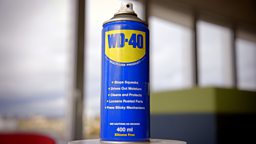How should I get rid of a verruca or wart?
Ask around your friends or colleagues if anyone has a wart, and those who will admit to it will be rare. A verruca? Maybe a few will confess – although more likely to a past affliction as a child (and they are indeed more common in children). But despite our embarrassment about these patches of thickened skin, the truth is that virtually all of us will have one at some point in our lives.

Warts and verrucas are the same thing – and are caused by various strains of the human papilloma virus (there are over 100 strains, and there’s pretty much no avoiding getting at least one of them through such things as shared changing rooms). So, when you get one, how do you get rid of it?
Well, the plain truth is that two thirds of the time they will just disappear within 2 years, as your body eventually recognises and deals with the infection. But if you don’t fancy waiting that long (or you’re one of the unlucky remaining one third), you’re faced with some options. There are plenty of ‘wart clinics’ ready to freeze your wart or verruca with liquid nitrogen – but this can damage the surrounding skin and the evidence for its effectiveness turns out to be surprisingly slim. Chemists also sell similar home treatments. But there have been three relatively small trials of something more outlandish-sounding: duct tape. And in one of them, duct tape clearly outperformed freezing as a way to get rid of warts (the other two trials showed no statistical difference).
So, we asked you to help us find out whether using duct tape on warts or verrucas was actually helpful.
Several hundred of you put this technique to the test and got in touch to let us know how you got on and now the numbers have been crunched and the results are in...
- The average wart reduction over 28 days was 1.3mm, which is a 25% reduction.
- 57% reported a reduction, 28% reported no change and 15% reported an increase.
- Bigger warts shrank more: by an extra 0.3mm for every extra 1mm at the start.
- Older warts shrank less: by 0.2mm less for each category of duration (0-3 months, 4-6 months, 7-9 months, 10-12 months, 1-2 years, more than 2 years).
Compared to other forms of wart treatment, or to doing nothing, these results are pretty good! And duct tape is relatively cheap and easy to use at home, so you might want to give it a go.
Thanks to everyone who sent us results, and to Prof Martin Bland who analysed them. We’re no longer collecting data but if you want to try using the duct tape technique on your warts of verrucas you can follow these instructions:-
How to treat your wart or verruca using duct tape
The first step is to cut a piece of duct tape roughly the same size as your wart. Then stick it on top and keep it on for six days. If it falls off, cut and stick on a new piece.

On the morning of the 7th day, take off the duct tape, soak the wart in warm water and file off the dead skin with a pumice stone or emory board. Then leave the duct tape off for the rest of the day and night and reapply it the following morning. If you have trouble keeping the tape on, try sticking a plaster over the top of the duct tape.
Keep doing this for four weeks. The key is to keep the tape on your wart for six days at a time, followed by a break of one day. And every time the tape is taken off, remember to file away the dead skin from the surface.

































































